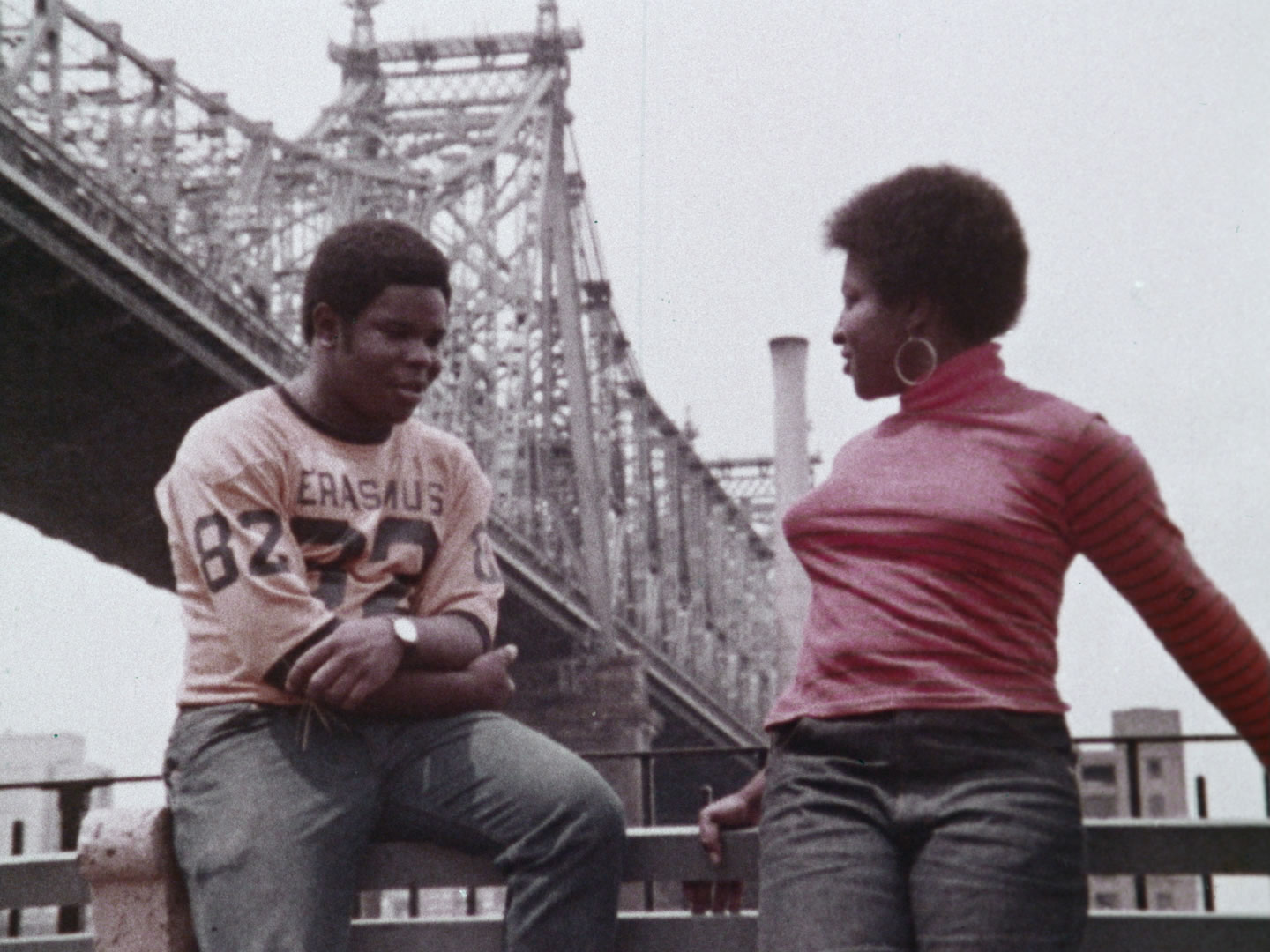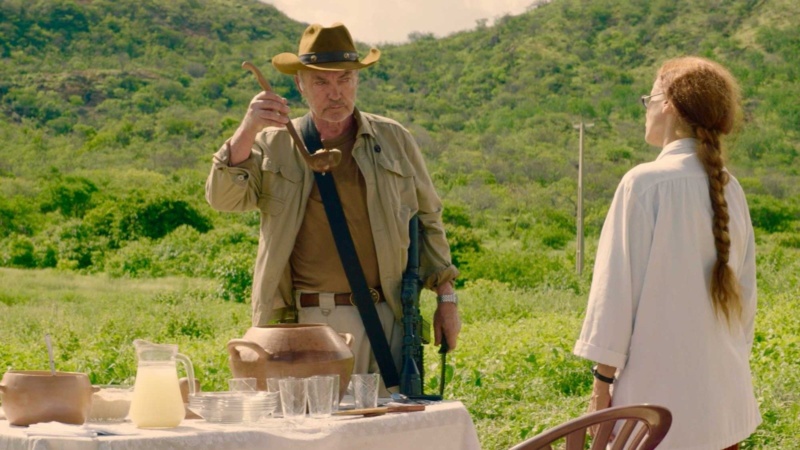
It is clear, after six months of pandemic consciousness, that though the forms of solidarity we’ve developed may be unusual and specific, they are linked. What happened to movies during the initial lockdown and the aftermath of perpetual isolation has led to a modest miracle of community. With museums, bootleg channels, small venues and distributions companies all flowing into the same rectangular screen, the Netflix hegemony has become less relevant and our movie-watching habits have become more disparate and fruitful. Movies stream right onto our computers handily but so do, as it turns out, opportunities to expand our commonality. The conditions of life under the pandemic have inspired genuinely felicitous moments of programming and performance—things that were already there became more obviously useful, and new solutions sprang up. It’s not that we wouldn’t all rather be together watching these movies on a wide, silvery screen; it’s that the connections being formed right now will be vital long after our favorite theaters have reopened. Regal may be closing all 500 of its US cinemas, but I’d propose that what’s happening online right now may make up for that, not in profit, but in an expanded idea of what we can watch and talk about. On October 12th, Disney announced a major reorganization, saying its “primary focus” will be streaming, so all of this might be ruined in six months.
One of the best examples is cinephobe.tv, a site that started streaming on March 29. It’s a delightfully simple and non-interactive; a single letterbox window gives you the movie that’s streaming and, just below, you get a long running schedule of past and future films. All you do is tune in—what’s there is what’s there. One day, it’s Richard Stockton’s rare 1970 film, The Meatrack, and then a few hours later, Bob Dylan’s 1978 curio, Renaldo and Clara. One day I watched it for more or less twelve hours straight, and the experience felt like a modified version of the late-night TV I grew up with in the seventies and eighties. The continuity and lack of choice (on my end) was as soothing as the idea of the animating intelligence on the other end. It was, in some sense, going to be OK.
I got in touch with the unidentified people behind the channel, one of whom said the following via email: “Essentially, we’re just a small group of NYC-based film enthusiasts that made a pragmatic decision to offer a constant, curated selection of rarities at a time when many of the great repertory theaters across the world are placed in an unfortunate and uncertain holding pattern. What we do can never replace what those institutions can offer, but we hope we can fill the gap in some small way.” Cinephobe.tv doesn’t ask for donations—“we felt like it would be nice just to have one thing that isn’t passing the hat or asking for Patreon subscribers at this time”—and anybody who wants to can email them at AltmansHashPipe@gmail.com “to propose a screening and provide their own introduction.” My anonymous correspondent, the last of maybe two dozen curators and programmers I spoke to this summer, managed to sum up the feelings of almost everyone I talked with. Every single one of them expressed a version of the idea that film, as a way into and through life, is too important to be treated only as a commodity.

“While we can wax philosophical on the grander goals and hopes for the influence Cinephobe.tv might have on cinema culture writ-large, sharing obscure movies with those interested is really our only true aspiration.”
That spirit of mutual aid and love before money is essential in all walks of life now—let films lead the way. But the commercial concerns are still of use. Kino Lorber, an established distributor of independent films, set up the online platform called Kino Marquee, which was created to support brick-and-mortar theaters in response to the closures that followed COVID, connecting streams to specific theaters. They also started Kino Now as a video on demand portal, “like an arthouse iTunes,” says programmer C. Mason Wells. My absolute favorite new film of the year, Bacuraru, was released exclusively to Kino Marquee. I was more than happy to pay $5 to have access for 48 hours, especially since we watched it twice. Kleber Mendenço Filho and Juliano Dornelles’s modified Western about resistance in the Brazilian sertao will absolutely provide the catharsis you need after watching America ride roughshod over the world one too many times.
Dennis Lim, director of programming for Film at Lincoln Center and the New York Film Festival, is presiding over a new online version of the real world institution, their Virtual Cinema. The 58th New York Film Festival was hosted earlier this month, with a scattering of in-person drive-in screenings. The bulk of the screenings, though, were online. I saw my favorite film of the year, Steven McQueen’s Lovers Rock, in the Lincoln Center Virtual Cinema and did not experience any sense of loss (though the dancing scenes would have been pretty thrilling in a theater setting). “How many more people we will reach this year is really exciting,” Lim says. “But I don’t think the cinema experience can be replicated. I think there’s something about the big screen and being together alone in a room with other people. It’s an act of surrender—we don’t have control over what’s happening.”
“There was initially more resistance to going online and now there’s much more willingness to do it,” Lim continues. “I think it’s just an acknowledgement that if you’re going to get a film out there, this is the only way to reach people right now.” As the pandemic stretched on, my girlfriend and I started watching a movie every single night, plowing through every sixties or seventies feature with a car we could find (Bullitt and Duel are key here) and sticking with channels or themes for a week or two at a time. My inbox became my street, and I saw institutions teaming up with newsletters, magazines partnering with curators. And, as with so much of the person-to-person help going on now, the question had to be: Why didn’t this happen before? And why would we have to stop?

Organizations with a largely physical presence have been transformed, for the most part for the better, by the increased focus online. The National Museum of African American Heritage and Culture, for example, has a valuable library perfectly suited to an extended streaming moment. After finding an amazing short film about Alice Coltrane that St. Clair Bourne made for Black Journal, I got in touch with photography and film curator Rhea Combs. In five minutes, she’d already told me about two directors I’d never heard of—the Reverend S. S. Jones and Hortense Tee Beveridge.
“Beveridge was the first black woman admitted to Local 771, the motion picture film editor’s union,” Combs shares. “Many of her works are held in our collection, thanks to a generous donation by film collector Pearl Bowser.” Work by Jones and Beveridge is easily accessed on the NMAAHC site. (Try Hands of Inge, a film about Black sculptor Inge Hardison that Beveridge edited.) Combs also pointed me to crucial documents like Tribute to Malcolm X, a segment made in 1969 for Black Journal and edited by Madeline Anderson, a pioneering African American filmmaker.
“The streaming moment now flattens this notion around purism, in terms of cinema or film and TV,” Combs says. “The democratization of access feels very rich. People are longing for some sort of human connection. Let’s make it more than a T-shirt. Let’s stay in this space together. There is an awful lot we all have to catch up on.”
Experimental, non-narrative film like Beveridge and Quill’s Morris is getting a real shot now. The relatively young Metrograph theater on the Lower East Side has been conducting an impeccable series of online screenings since July, including plenty of non-commercial, short films. “Often you have to shoehorn everything into a certain context when programming experimental or avant-garde films in movie theaters,” says Alice Ma, head of programming at Metrograph. “There’s a certain price per ticket and there’s a need to justify that.”
“I mean, if you were to ask any of us to list ten of our all-time favorite films, I would imagine that half of them are between two minutes and fifteen minutes,” adds artistic director Jake Perlin. “And maybe one of those short films is all that someone wants to watch at a certain moment. We can address that online now. We don’t have to build an entire in-person series around that one three-minute film.”
Metrograph is part of a ground-level community in New York that is, in some dopey capitalist sense, a cohort of competitors, but they mostly work together. Now, they have no choice. In 2018 at Metrograph, programmer Nellie Killian presented “Tell Me,” a series of films about women and their stories made by women filmmakers, back in the time of asses in seats. In May, with seats off the table, the Criterion Channel began streaming the entire series.

“That was one of the most important repertory programs in my opinion, of recent memory,” Thomas Beard, co-founder of Brooklyn film venue Light Industry, says. “And if you didn’t live in New York or a major city that it toured to, then you wouldn’t have had a chance to see many of these movies. By making a version of that series available through Criterion, the potential audience for it expanded dramatically.”
These relations can be strengthened during this atomized time, and they are. Beard and co-founder Ed Halter haven’t held any screenings at Light Industry but they’ve presented a series of discussions preserved now as podcasts. Mono No Aware, a non-profit film workshop in Brooklyn, has also been presenting live stream workshops on film developing and has hosted outdoor screenings. These organizations will be the ones protecting the library of film and the consciousness of film history, not Netflix or Tubi or Hulu or any of the other corporate offshoots masquerading as start-ups.
“One thing we have to bear in mind is that, even though there seems to be this embarrassment of riches, there’s still so much that’s left out,” Beard said. “There’s this gap between what was once available in any decent college town video store and what’s available now. Because of streaming licensing agreements, something might be available for a month—and that’s great—but then it goes for years without being on any streaming channel. At Kim’s Video, that movie would have just been on the shelf, year after year. There’s a way in which the video store made the history of cinema legible in a way that isn’t the case on streaming platforms.”
This is where outlets like cinephobe.tv and other volunteers working in the margins come in. The archive is the home of the faithful, and at the beginning of lockdown, film archivist J. Michael Eugenio set up Solidarity Cinema, a non-commercial repository of “film accounts of left struggle and solidarity.” As volunteers upload more films, the Google Drive folder grows and the people’s library expands.
The torrenters and file traders of today are the historians of tomorrow. Jon Dieringer founded Screen Slate nine years ago, as a way of tracking screenings around New York and collecting essays about the films playing. During the time of COVID, Dieringer pivoted to daily email dispatches about films across the spectrum of streaming platforms. There’s probably no better single source, and definitely not one as catholic in taste. A chunk of what you see here came from Dieringer, his writers and their colleagues.
As September neared its final week, the Maysles Documentary Center posted a documentary by St. Clair Bourne about Amiri Baraka, for free. I jumped on the tickets and waited for the stream to go live. In the days that followed, we started watching the The Complete Films of Agnés Varda, a beautiful brick of fifteen CDs from Criterion. Sometimes the physical reality of objects is as comforting as their contents.










 in your life?
in your life?

